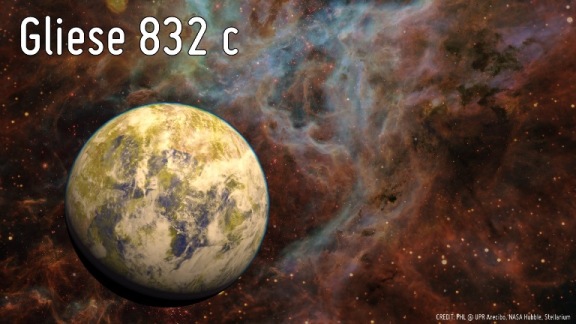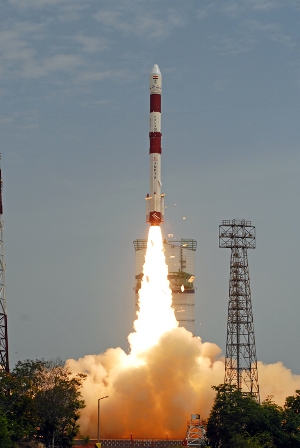
Artistic representation of the potentially habitable Super-Earth Gliese 832 c against a stellar nebula background. Image credit: PHL@UPR Arecibo/ NASA Hubble/Stellarium
MELBOURNE (PTI): Researchers have found a potentially habitable planet, located just 16 light years away, which is among the top three most Earth-like exoplanets ever discovered.
An international team of researchers discovered the "super-Earth" planet, GJ 832 c, which takes 16 days to orbit its red-dwarf star, GJ 832, and has a mass at least five times that of Earth.
It receives about the same average stellar energy as Earth does, because red dwarfs shine more dimly than our Sun, and may have similar temperatures to our planet.
These characteristics put it among the top three most Earth-like planets, according to the Earth Similarity Index developed by scientists at the University of Puerto Rica in Arecibo.
The research team, led by Dr Robert Wittenmyer in the University of New South Wales School of Physics, reported their finding of the planet in the Astrophysical Journal.
Team member and Head of UNSW's Exoplanetary Science research group, Professor Chris Tinney, said that if the planet has a similar atmosphere to Earth it may be possible for life to survive, although seasonal shifts would be extreme.
"However, given the large mass of the planet, it seems likely that it would possess a massive atmosphere, which may well render the planet inhospitable. A denser atmosphere would trap heat and could make it more like a super-Venus and too hot for life," said Tinney.
The planet was discovered from its gravitational pull on its parent star, which causes the star to wobble slightly.
Members of the Anglo-Australian Planet Search team used the Anglo-Australian Telescope to make observations of the planet.
Their data were combined with observations from the 6.5m Magellan Telescope and the European Southern Observatory 3.6m telescope (both in Chile) to make this new discovery.
On the Earth Similarity Index, or ESI, the highest ranking exoplanet is Gliese 667C c, which is about 23 light years away. It has an ESI of 0.84 compared to Earth's maximum score of 1.0.
Next on the list is Kepler-62 e with an ESI of 0.83, although it is much further away - about 1,200 light years distant. And the new planet - the closest at just 16 light years away - comes in third with an ESI of 0.81.
 Previous Article
Previous Article Next Article
Next Article











The Indian Air Force, in its flight trials evaluation report submitted before the Defence Ministry l..
view articleAn insight into the Medium Multi-Role Combat Aircraft competition...
view articleSky enthusiasts can now spot the International Space Station (ISS) commanded by Indian-American astr..
view article